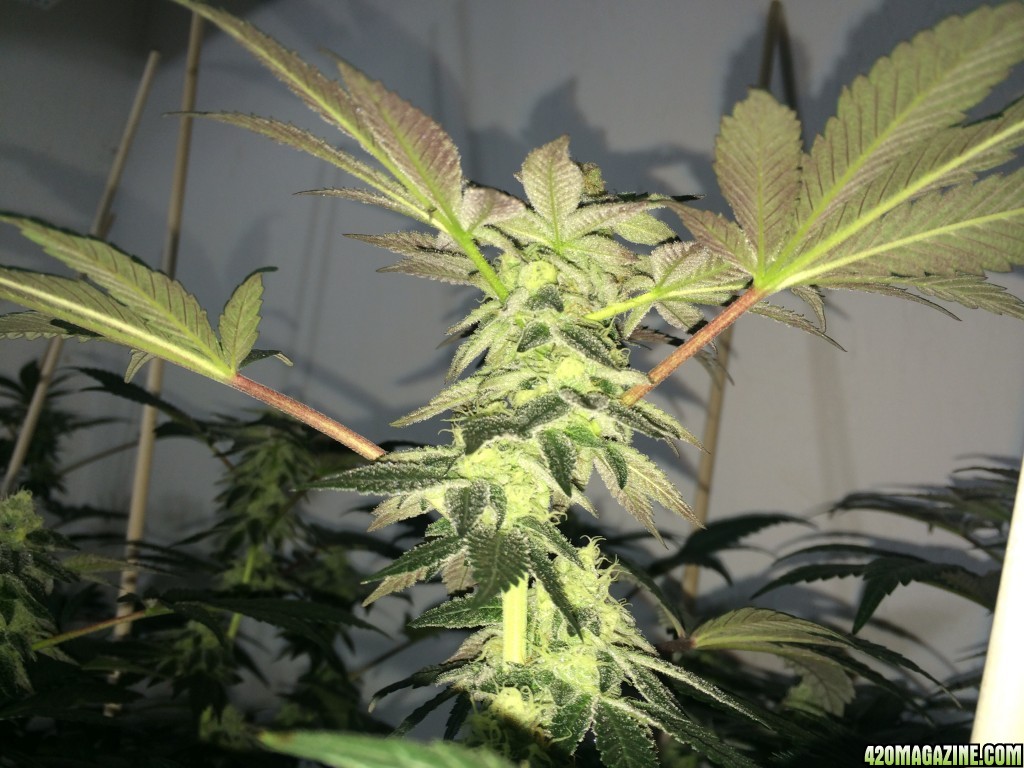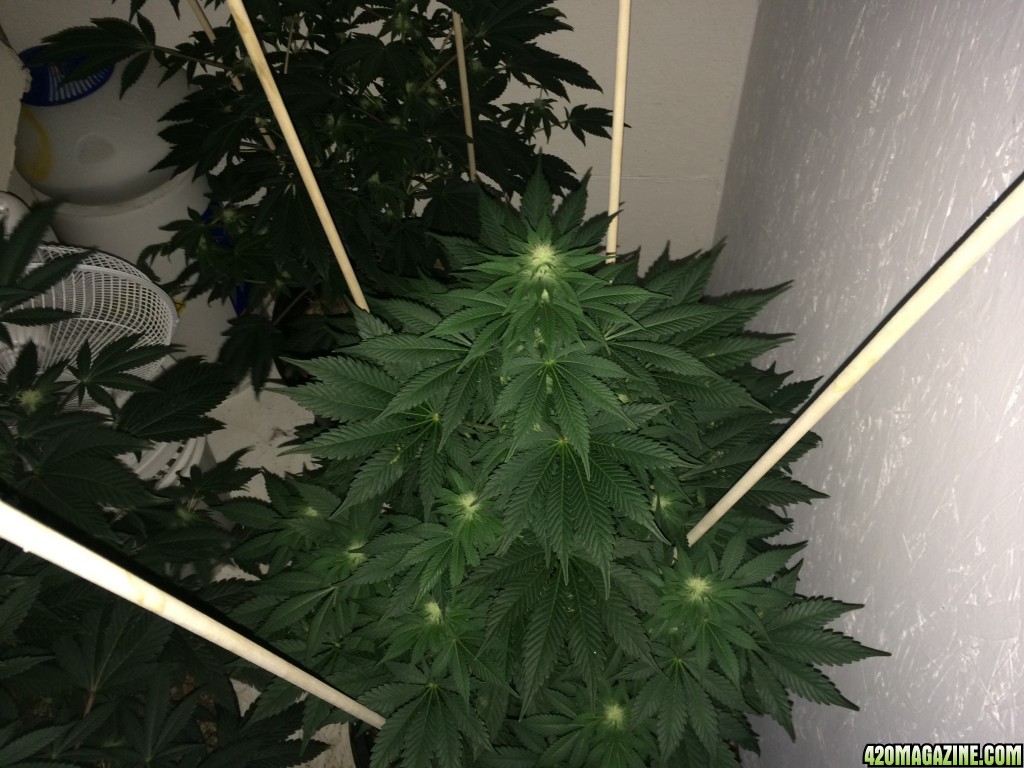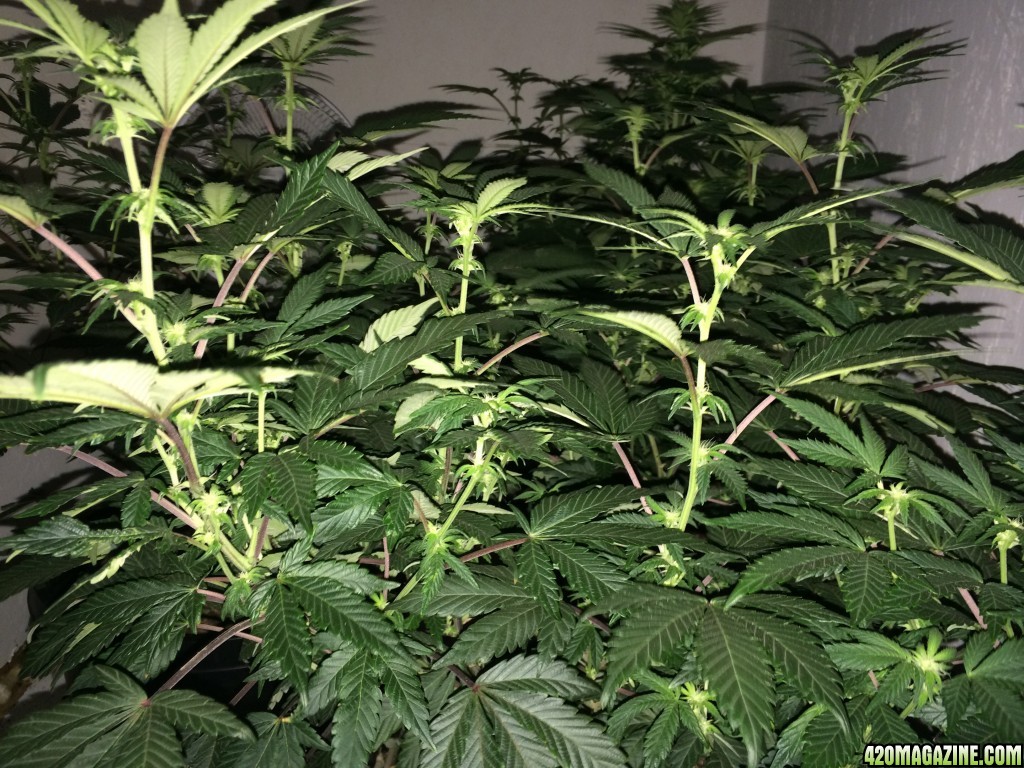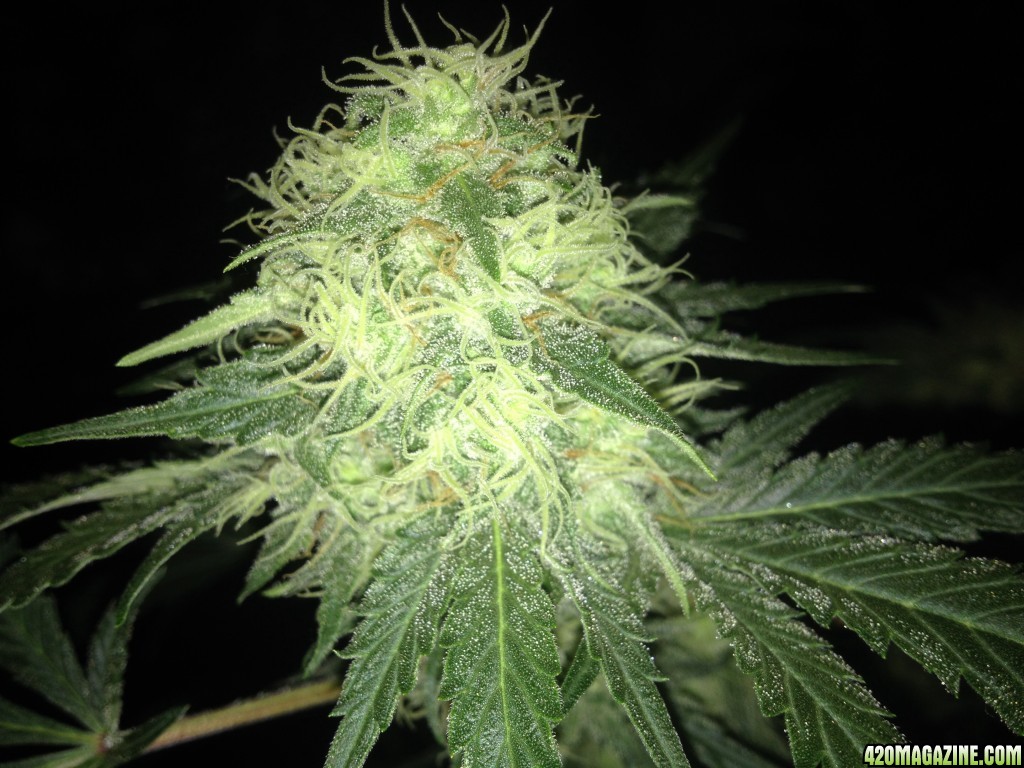Re: Sweetsue's Tiny Closet - Second Grow - Sweet Dark Devil & Bomb Berry Bomb - CFL -
This kind of stuff gets my blood flowing faster. There's so much we have yet to learn about our connection to the universe at large. If you think about it, from our very centers we are a series of fibrous connections, most eloquently demonstrated in the fascia, that all-inclusive webbing that fills all the space below your skin that is not filled with organs or bones (their own form of netting) or passageways.
Living soil is the same way. The majority of the soil structure is made up of the netting formed by the fungus hyphae. So the soil, below the surface, is also a webbing.
We now know that space is also filled with a webbing. It's not a far leap to consider that the atmosphere around us is filled with the same type of webbing that we don't even see. That would explain this.
THE INTENTION EXPERIMENT
The Germination Intention Experiments
Since June 2007, The Intention Experiment has been carrying out a series of 'Germination Intention Experiments' with noted psychologist Dr. Gary Schwartz and his laboratory team at the University of Arizona to test whether intention can affect the growth of plants. We were inspired by the work of Canadian psychologist Bernard Grad, who had carried out several studies showing that seeds irrigated with water held by a healer had a faster germination rate and growth than controls (International Journal of Parapsychology, 1964; 6: 473-98).
British researcher Serena Roney-Dougal and parapsychologist Jerry Solfvin had also tested whether healing intention sent by a healer to seeds could be used to affect the health and growth of lettuce plants on a commercial organic farm. In their first study, the seeds given intention didn't sprout any faster or grow larger, but they were healthier and had less fungal disease and slug damage than the controls (Journal of the Society for Psychical Research, 2002; 66: 129-43). In a replication study, however, they'd showed enhanced growth, as well as health (Journal of Parapsychology, 2003:67: 279-98) We selected barley seeds — the food of choice of most livestock, and
a healthy grain for humans. Dr. Schwartz and Mark Boccozzi, Dr. Schwartz's lab technician, planned to prepare four sets of barley seeds – one set of seeds, and three controls – to eliminate chance findings.
Six experiments thus far
Thus far, we have run six Germination Intention Experiments — one via the Internet, with participants from countries all over the world, and five others in front of Lynne McTaggart's audiences, of various sizes and locations around the world. These included participants over the Internet, plus audiences in Sydney, Australia (600 participants), Palm Springs, California (130), Rheinbeck, New York (100), Hilton Head, North Carolina (500) and Austin, Texas (120). In each of these experiments, we asked the audience to choose one of four sets of seeds (30 seeds per set) and then sent an intention for the seeds to grow "at least 3 cm by the fourth day of growing".
Once we were finished, Dr. Schwartz's lab technician Mark Boccozzi (who was kept blind to the set selected) planted the 120 seeds under standardized conditions. At the end of five days, the seeds were harvested and their lengths measured in millimeters.
Let's call this kind of procedure the 'Intention' Studies.
As a second control condition, with each Intention Experiment, Mark ran a separate Control Experiment. On these occasions, he selected and prepared another 120 seeds into four sets, assigned one set to be the 'intention' set (even though no distant intention was to be sent), and, as with the other experiments, planted the seeds, then
harvested and measured them after five days.
So this experiment was to act as a second-tier control — a control of the control. So we'll call these the 'non-intention' Control Studies. In total, the number of seeds tested was 1440.
Complex analyses
Dr. Schwartz then conducted a variety of complex analyses of the growth of all six Intention Experiments and the six Control Experiments. He compared overall growth of targeted seeds with that of all the not-targeted seeds, the seed growth of all seeds in the Intention Experiments versus those in all the Control Experiments, and all seeds sent intention in the Intention Experiments plus those assigned 'intention seeds' in the Control Experiments) versus all seeds that were not targeted in all 12 experiments.
A number of fascinating results emerged. Firstly, the experiment showed that the intention had a robust effect.
As an overall average, the seeds sent intention grew 56 mm, compared with 48 mm for the non-targeted seeds. This means that seeds sent intention, on average, were 8 mm (about a third of an inch) higher than the controls. In contrast, the seeds run in the control Intention Experiments only varied by 2 mm. This effect was statistically significant (p<0.007). This means that there is a 0.7 per cent possibility that we arrived at this result by simple chance. Anything less than a p value of 0.05 is generally considered statistically significant.
Dr. Schwartz also found a highly significant effect when comparing the targeted seeds on the Intention Experiment days with those targeted on the Control Experiments. Those targeted during real Intention Experiments grew significantly higher than those targeted in the Control Experiments (p<0.003).
However, there was no different between target seeds and nontargeted seeds during the Control Experiments. Those seeds labeled 'intention seeds' in the Control Experiments grew about the same size – in fact, 2 mm shorter than the non-targeted seeds, a nonsignificant difference.
Intention 'grouping'
However, our biggest effect of all occurred when comparing the results of all plant growth in the actual Intention Experiments against all plant growth in the Control Experiments. We discovered that on the days we sent intention, all the plants grew higher than all the plants in the Control Experiments, with the plants sent intention the highest of all. This effect was highly significant (p<0.0000001), with a 0.00001 per cent possibility that we arrived at this result by simple chance.
Scattergun effect
This kind of 'scattergun' effect occurred in an experiment by Dutch psychologist Eduard Van Wijk, who works with German physicist Fritz-Albert Popp of the International Institute for Biophysics. Van Wijk placed a jar of a simple algae, near a healer and his patient, then measured the photon emissions of the algae during healing sessions and periods of rest.
After analyzing the data, he discovered remarkable alterations in the photon count of the algae. The quality of emissions significantly changed during the healing sessions, as though the algae were being bombarded with light. There also seemed to be changes in the rhythm of the emissions, as though the algae had become attuned to a stronger source of light.
Information from the environment
Our experiments also suggest that living things register information from the entire environment, and not simply between two communicating entities. This series of studies suggests that distance from which intention is sent doesn't have any bearing on the results. A group of people scattered around the globe produced the same effect as a group of 600 located thousands of miles away from the target.
According to this data, the size of the group didn't have any bearing, either; even a tiny group of 100 in a room in upstate New York had been able to profoundly affect a batch of seeds more than a thousand miles away.
Power and experience
The only important factor appears to be experience. The audience in Hilton Head, South Carolina, which included 500 long-time practitioners of Healing Touch, produced the most profound effect. These were people who were practiced in the use of intention. This suggests that intention, practice and experience count.
The results of these six experiments were presented at the Societyfor Scientific Exploration's annual meeting in June 2008.
My take from this from a gardener's perspective? I'm doing the right thing by showering my plants with loving energy and intentions of health and vigor. Apparently the loving part was important.


 ,miss a few hours and need a few to catch up.How do you do it girl? I've got the boys ,so it's out to the backyard to shoot some hoops with the little one (8)
,miss a few hours and need a few to catch up.How do you do it girl? I've got the boys ,so it's out to the backyard to shoot some hoops with the little one (8) 
meet and greet. Mmmmmm Pot luck and home grown. DrZiggy would rock!

 ,miss a few hours and need a few to catch up.How do you do it girl? I've got the boys ,so it's out to the backyard to shoot some hoops with the little one (8)
,miss a few hours and need a few to catch up.How do you do it girl? I've got the boys ,so it's out to the backyard to shoot some hoops with the little one (8) 








 eat a brownie and relax
eat a brownie and relax 











